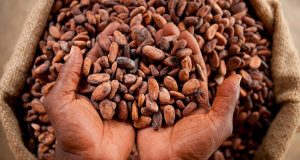Exports of yam tubers reached a record-high of US$48million last year, according to data from the Ghana Export Promotion Authority (GEPA) – making the country the world’s largest exporter of yam.
The country now controls 24 percent of the US$200million global export market, growing its export value from US$38.5million in 2018 to US$48.2million in 2021.
GEPA said exports grew at an annual rate 14 percent in 2020-2021 and an average of 9 percent from 2017 and 2021.
The USA alone imported US$87million worth of yam from the world in 2021. Among its top suppliers were: Jamaica, 37.4 percent; Ghana, 21.9 percent; Costa Rica, 10.8 percent; Colombia, 8.7 percent; and Brazil, 8.2 percent,” GEPA said in a yam industry report.
“The United States of America’s imports of yam from Ghana represent 39.6 percent of the total global value of yam exported by Ghana,” GEPA added.
Meanwhile, globally, Jamaica is Ghana’s closest competitor, ranking second in export of yam. Its total exports were valued at US$39million in 2021.
Jamaica had 82.8 percent of its yam exports go to the United States market, as compared to the 39.6 percent of Ghana’s exports to the same market.
The leading global exporters of yam were Ghana, US$48million; Jamaica, US$39million; United States of America, US$22million; Japan, US$21million; and China, US$20million.
Growth forecast
The global yam market is projected to register a compound annual growth rate of 3.5 percent between 2020 and 2025 says Mordor intelligence, a market research firm.
According to the International Institute of Tropical Agriculture, most of the world’s production comes from West Africa which represents 94 percent – with Nigeria alone producing 71 percent. However, Ghana remains the region’s largest exporter of the starchy tuber.
Challenges facing yam production
Just like any other agricultural produce, constraints to its production include high labour demand and other inputs such as planting materials, unreliable sources of credit, pests and diseases, declining soil fertility, and unpredictable weather conditions.
On commercial terms, yam production is constrained by lack of modern storage facilities, absence of ready market and a well-coordinated national policy to boost production and export.
For instance, every year there are reports of heaps of yam being left to rot across many farming communities because they lack storage facilities.
“We do not have storage facilities; we leave the tubers in the open and exposed to the sun, causing the yam to rot,” said Barnabas Abu, a yam-farmer based at Yendi-Bimbilla in the Northern Region.
He said the situation gets particularly bad during January and May, due to excessive heat within that period.







